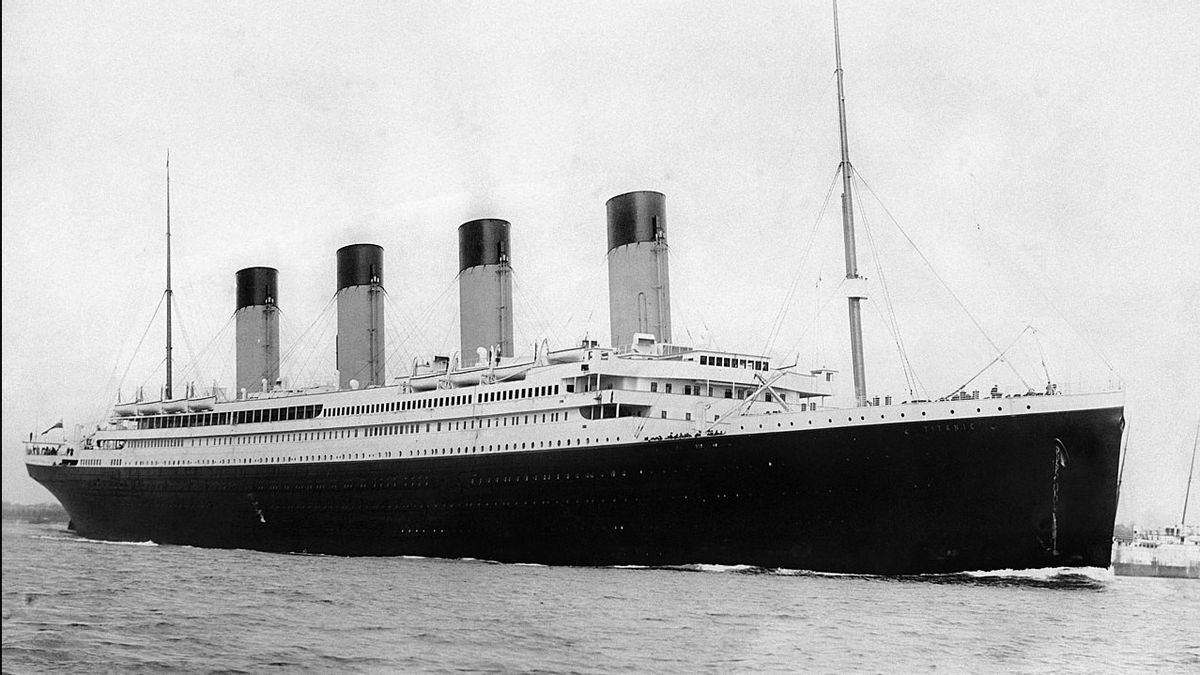JAKARTA Today's history, April 15, 1912, recorded the world's most luxurious and largest passenger cruise ship at that time, Whereby, sank in the Atlantic Ocean. The British ship, which at that time served its inaugural voyage with 2,200 passengers, sank in waters about 643 km south of Newfounland, Canada as a result of crashing into an iceberg.
Created at the Harland and Wolff shipyard, Belfast, divided into William Pirrie, an Irish ship designer. The large ship is owned by British shipping company White Star Line, which has now been merged with the Cunard Line into the Cunard White Star Line.
The mission was made for three years, from March 31, 1909 to April 2, 1912, before finally officially going to sea on April 10, 1912. If it is valued at the current value of money, the cost of making the fire reaches around Rp. 27.5 trillion! Measuring from bow to stern, the engine has a length of 269.138 meters. The total weight of the ship reaches 53.3 thousand tons.
The salve is divided into 16 compartments that are claimed to be waterproof, so this ship is predicted to be unable to sink. The waiting day also arrived, far away from Southampton Harbor, England to New York in the United States.
The passengers consist of many famous celebrities and figures, such as: John Jacob Astor IV (US billionaire), Benjamin Guggenheim (billioner mining entrepreneur from the US), Dorothy Gibsons (axis), Francis Davis Millet (citizens and hangers), to famous British journalist William Thomas Stead.
Badminton owners, shareholders of JP Morgan are actually scheduled to join the sail but it was canceled at the end. They stopped at Cherbourg, France and Queenstown, Ireland to take the last passenger before heading to the violent Atlantic Ocean.
All claims of superiority turned out to be nonsense. On the evening of April 14, 1912, Captain Edward Smith, the captain, failed to anticipate an iceberg blocking the ship's trajectory. The large ship grazed an iceberg, causing five compartments in his hull to leak.
Because each compartment is interconnected, seawater also fills every part that leaks in the hull. Until finally the ship couldn't withstand the volume of water that entered its hull, it broke into two. On April 15, 1912 at 02.20 local time,
In addition to being wary of danger, one thing that made the transing tragedy so devastating was the absence of sufficient mandates. The lack of medication made many passengers who eventually had to fall into the sea, experience great hypothermia, before finally dying. The deadly accident at sea in the early 20th century claimed 1,500 lives. Most of the 700 passengers who survived were women and children.
The court found the reason listed in the attachment that the cause of the sinking was that it hit an iceberg, which was exacerbated by the speed of the ship that crossed the line while sailing in the current situation (revolving), "is so written in the British Wreck Commissioner's Inquiry report: Report on The Lost of thembar.
Disasters that affect the ratification of several new rules on shipping. The first International Convention on Mental Safety in the Sea was held in 1913. Regulations regarding the same mandate capacity as the number of passengers were also adopted, exercises for handling emergency conditions when shipping were also given to passengers. Ice patrols to secure shipping routes in the North Atlantic are held, and ship radios are required to be on standby 24 hours to monitor emergency situations.
A joint French-US expedition on September 1, 1985 found that the wreck lay at a depth of 13,000 feet, or nearly 4 km at the bottom of the ocean.
The English, Chinese, Japanese, Arabic, and French versions are automatically generated by the AI. So there may still be inaccuracies in translating, please always see Indonesian as our main language. (system supported by DigitalSiber.id)












